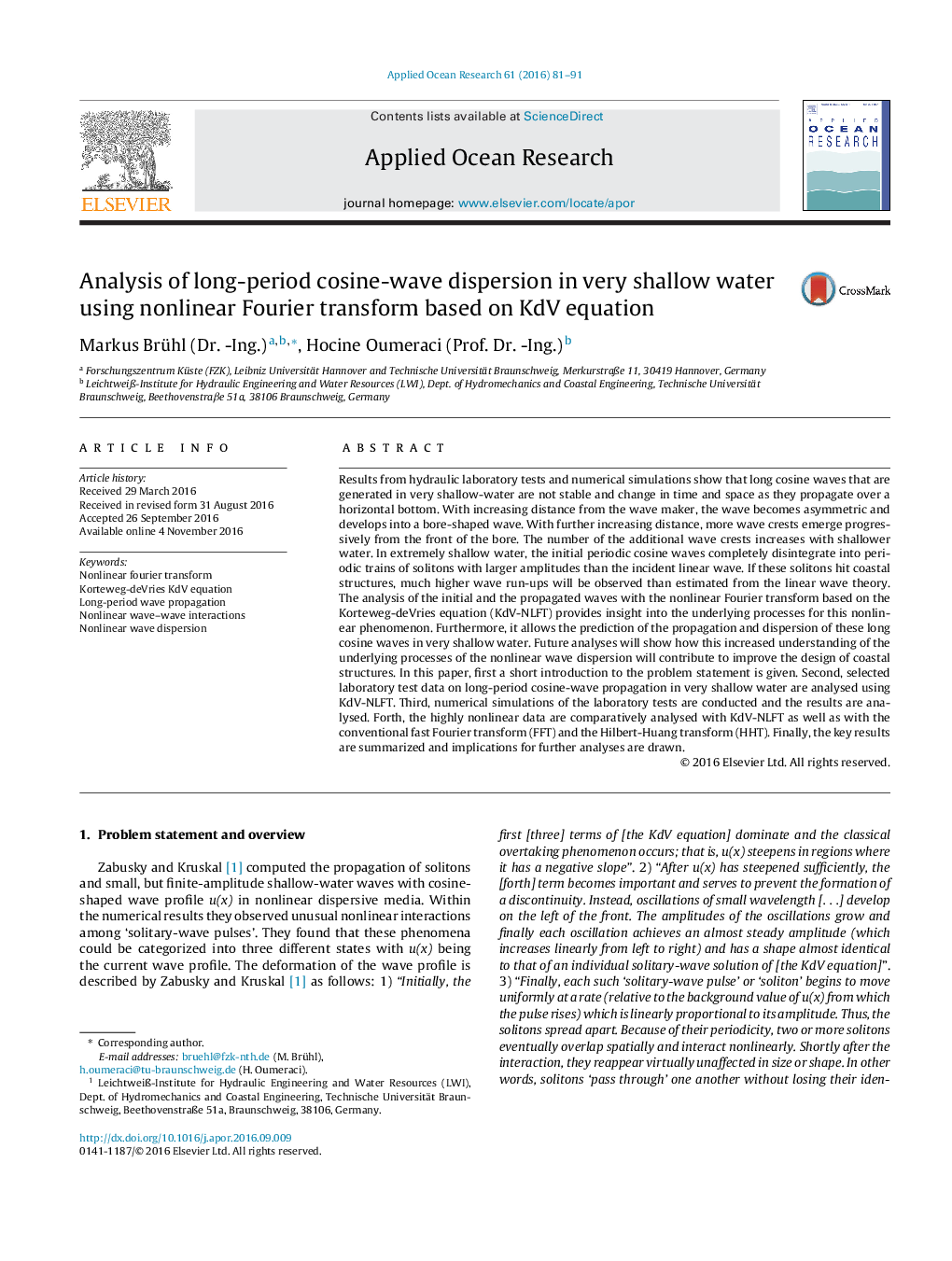| Article ID | Journal | Published Year | Pages | File Type |
|---|---|---|---|---|
| 5473331 | Applied Ocean Research | 2016 | 11 Pages |
Abstract
Results from hydraulic laboratory tests and numerical simulations show that long cosine waves that are generated in very shallow-water are not stable and change in time and space as they propagate over a horizontal bottom. With increasing distance from the wave maker, the wave becomes asymmetric and develops into a bore-shaped wave. With further increasing distance, more wave crests emerge progressively from the front of the bore. The number of the additional wave crests increases with shallower water. In extremely shallow water, the initial periodic cosine waves completely disintegrate into periodic trains of solitons with larger amplitudes than the incident linear wave. If these solitons hit coastal structures, much higher wave run-ups will be observed than estimated from the linear wave theory. The analysis of the initial and the propagated waves with the nonlinear Fourier transform based on the Korteweg-deVries equation (KdV-NLFT) provides insight into the underlying processes for this nonlinear phenomenon. Furthermore, it allows the prediction of the propagation and dispersion of these long cosine waves in very shallow water. Future analyses will show how this increased understanding of the underlying processes of the nonlinear wave dispersion will contribute to improve the design of coastal structures. In this paper, first a short introduction to the problem statement is given. Second, selected laboratory test data on long-period cosine-wave propagation in very shallow water are analysed using KdV-NLFT. Third, numerical simulations of the laboratory tests are conducted and the results are analysed. Forth, the highly nonlinear data are comparatively analysed with KdV-NLFT as well as with the conventional fast Fourier transform (FFT) and the Hilbert-Huang transform (HHT). Finally, the key results are summarized and implications for further analyses are drawn.
Keywords
Related Topics
Physical Sciences and Engineering
Engineering
Ocean Engineering
Authors
Markus (Dr. -Ing.), Hocine (Prof. Dr. -Ing.),
